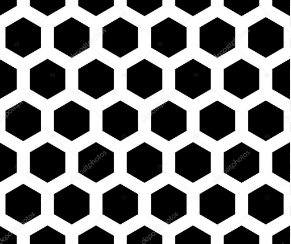Hexagon:-Rao5clpx7m= Octagon

The geometric shapes of hexagons and octagons present intriguing contrasts in both their mathematical properties and practical applications. Hexagons, with their six sides, are often celebrated for their efficiency and stability, while octagons, boasting eight sides, offer distinct aesthetic and structural advantages. This discussion will explore how each shape not only embodies unique characteristics but also plays pivotal roles in various fields, from architecture to nature. Understanding these shapes’ functionalities could lead to surprising insights that challenge conventional perceptions of geometry and design. What implications might these insights have for future applications?
Understanding Hexagons and Octagons
Hexagons and octagons are two distinct polygonal shapes characterized by their respective number of sides and angles, each exhibiting unique geometric properties and applications in various fields of mathematics and design.
Hexagon symmetry allows for efficient packing and tiling, while octagon shapes provide aesthetic appeal in architecture.
Understanding these forms fosters appreciation for their structural significance and versatility in practical applications.
Read more: Hand:Pwqbhn1nwbi= Tattoos
Mathematical Properties and Comparisons
The mathematical properties of hexagons and octagons reveal distinct differences in their internal angles, symmetry, and area calculations, which are crucial for applications in both theoretical and practical contexts.
Hexagons possess six sides with internal angles summing to 720 degrees, while octagons have eight sides totaling 1080 degrees.
These geometric relationships underscore their unique symmetry properties, impacting their structural integrity and aesthetic appeal.
Applications in Real Life
How do hexagons and octagons manifest in various real-world applications, ranging from architecture to nature, showcasing their distinct structural benefits and aesthetic qualities?
In architectural design, hexagonal patterns optimize space and enhance stability, while octagonal shapes contribute elegance and uniqueness.
Similarly, nature patterns, such as honeycombs and certain flower structures, illustrate efficiency and beauty, highlighting the relevance of these geometric forms in our environment.
Read more: Hairstyle:Gnem_H_Qti0= Wolfcut
Conclusion
In conclusion, hexagons and octagons exemplify the harmony of form and function within geometric design.
The hexagon, reminiscent of honeycomb cells, showcases nature’s efficiency, while the octagon, akin to a stop sign, embodies clarity and order in urban landscapes.
Each shape, with its distinct properties and applications, contributes uniquely to various fields, from architecture to natural formations, illustrating how geometry influences both aesthetic appeal and practical utility in everyday life.




